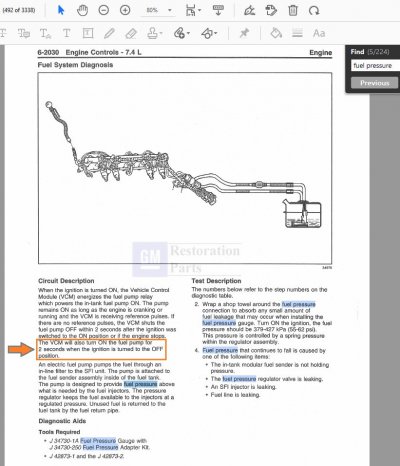Good, specific problem description. If this truck was mine, I would use the spark plugs to see if I could
get a clue from what's going on in the combustion chamber.
I'd pull the #6 plug, and also pull a plug from a cylinder showing zero misfires. I'd then compare them both.
IF the #6 plug was much darker/carboned up as compared to the 'known-good' plug, then I would inspect the
plug for any cracks anywhere, but especially the insulator.
If the plug shows no physical damage, then I'd head down the dribbly injector troubleshooting path identified by
@1997. If the misfiring plug #6 is either lean or oily, then I'd go down the leaky intake manifold path that
@L31MaxExpress is on.
If you would like confirmation of a deeper diagnosis (failing injector or leaky intake) and at the same time
remove the possibility that it's just a cracked/marginal spark plug, you could buy -
1- new plug
prior to
pulling the plugs outlined above, and do this:
* Pull both plugs. Take side-by-side photo for us.
* Install new plug into misfire-free cylinder.
* Take 'known-good' plug from misfire-free cylinder and install that into the #6 cylinder.
* Drive vehicle until symptoms return.
* Pull both plugs and re-examine. If failure footprint repeats, we have eliminated the spark plug as a possibility and now we have solid data to support going deeper.
****
To summarize, via the spark plugs we can get the no-kidding info straight from the combustion chamber.
Quite possibly the plugs will confirm the P0306 (or misfire count) that is being called out?
And we will use a 'known good' spark plug from a misfire-free cylinder to compare/contrast the #6 plug condition.
And moving the new plug into the misfire-free cylinder will allow us to contain any variable that the new plug represents.
And the misfire-free cylinder gives us a 'known good, flown good' spark plug as a constant to test the suspect cylinder.
And please share the photos. The fact that you are already instrumented for this misfire is a plus. And it will be
interesting to see if it takes 2 days, 2 weeks, or 2 months for a noticeable misfire to come back.
I realize that this seems like a lot of extra steps. But for the price of a single new spark plug and your
attention to detail, we can eliminate the engine being a victim of a bad plug, and give us more failure info before
we pass judgement on your recently replaced injectors and intake manifold gasket.
EDIT: On the TBI system, zero fuel pressure is held once power is removed. On the other hand, not only is the
Vortec fuel delivery system designed to hold pressure between trips, the VCM actually primes the fuel pump
for 2 seconds *after* Key OFF. (In an attempt to have a round in the chamber so to speak, especially for those
drivers who don't let the 2-second Key ON prime occur prior to starting.) So a dribbly injector literally has all
night with a slow seep/weep to dribble the fuel out. And this would also help to explain why it works find during
the day -- there's not enough time for the marginal injector to drain the fuel rail down.
I have yet to do this, but it would be interesting to see just how well, or how poorly my chore truck holds pressure
overnight. In other words, if you had a fuel pressure gauge on your truck, and it read full pressure when you shut
if off at night, then you came back in the morning and the pressure was gone, and then you discovered that the
#6 plug was all carboned up, then the facts would really line up that you have a bad injector.
Imagine replacing the injector, and now the pressure stays overnight at/near the same pressure checked *prior* to
inserting the key. And the #6 plug stays as clean as it's brothers & sisters. It would be good to know if this is a
valid theory. (If anyone has performed an overnight pressure test on their Vortec fuel delivery system, please add
your insight here. TIA!)
Food for troubleshooting thought.
Best of luck --


